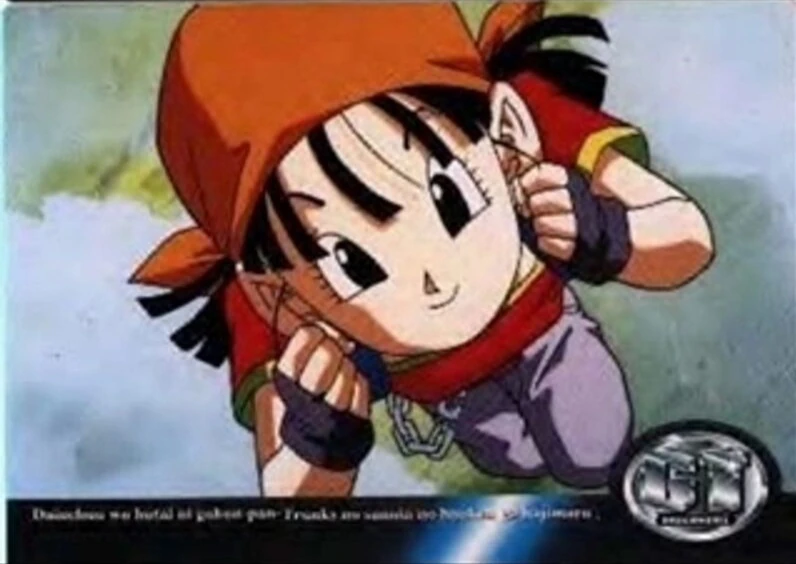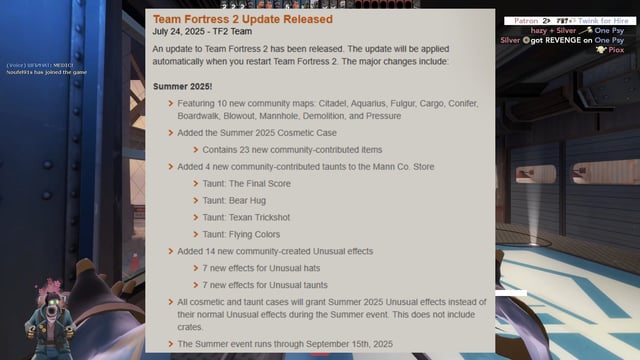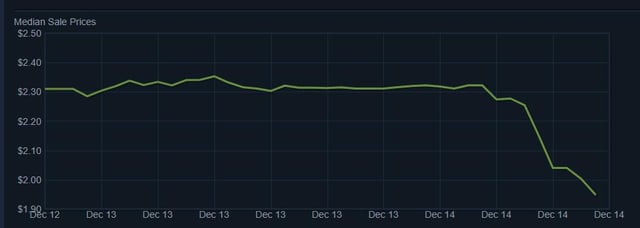From Trilby to Team Captain: A Veteran's Look at TF2's Cosmetic Revolution Team Fortress 2 wasn't just a game; it was a phenomenon.

Team Fortress 2 wasn't just a game; it was a phenomenon. And a massive part of that phenomenon was the bustling economy surrounding its hats, miscs, and weapon skins. I spent years neck-deep in that world, both as a high-tier item trader and a community artist trying to leave my own mark. From the thrill of unboxing that first Burning Flames Unusual to the sting of market crashes, I've seen it all. So, buckle up as we delve into the wild, wonderful, and sometimes wacky history of Team Fortress 2's community-created cosmetics and item economy.
1. The Early Days of Cosmetic Creation
Back in the day, before crate keys were king, before Backpack.tf, there was…anticipation. A lot of it. Every content patch felt like Christmas morning. The initial wave of community-created items was a breath of fresh air. The "Original Trilby," a simple, stylish hat, and the "Gentleman's Ushanka," a cozy, class-agnostic winter warmer, stand out. They were proof that the community could add value, style, and personality to the game.
But things were different back then. Limitations were significant. The submission process was less streamlined. Polycount restrictions meant simpler models and textures. The feeling, however, was electric. We were shaping TF2’s future, one item at a time. We'd huddle on forums, theorizing about what Valve would add next, which class would get the coolest new look. It was a simpler time, before the complexities of a fully-fledged economy took hold.
2. The Mann Co. Store and Key Inflation
Then came the Mann Co. Store. Oh, the Mann Co. Store. It was Valve’s attempt to monetize the game more directly, and it irrevocably changed everything. Introducing purchasable weapons, cosmetic items, and, most importantly, keys to unlock crates.

Keys. They were the game-changer. Initially intended to unlock crates, they quickly became the de facto currency for high-value trades. Refined metal (ref), which was the previous standard, became almost worthless in comparison. Suddenly, trading revolved around keys. "I'll give you 10 keys for that Unusual." "This Strange weapon is worth about 2 keys."
This impacted player interaction massively. It introduced a more transactional element. While bartering still happened, keys provided a consistent, easily quantifiable value. It wasn't always positive, though. The focus shifted from enjoying the game to maximizing profit for some. And as keys became more valuable, so did the pressure to get your hands on them.
3. The Rise of Trading and Backpack.tf
The Mann Co. Store birthed a trading scene that quickly outgrew in-game chat. That's where sites like Backpack.tf stepped in, becoming indispensable tools for any serious trader.

Backpack.tf provided item price discovery, reputation systems, and a centralized platform for trading. Price suggestions, while not always accurate, became the gospel for many. Your reputation on the site mattered. A good reputation meant easier trades and higher prices; a bad reputation could tank your trading career.
I remember spending hours on Backpack.tf, analyzing price histories, comparing offers, and trying to snipe deals. It was a game within a game. It fostered a strong sense of community too, with forums, trading servers, and a shared understanding of market trends.
4. The Allure of Unusual Effects
Unusual hats. The pinnacle of TF2 vanity. These hats, adorned with particle effects like "Burning Flames," "Sunbeams," or "Orbiting Planets," were incredibly rare and, therefore, incredibly valuable.

The rarity of Unusuals fueled the market. Some effects, like the aforementioned Burning Flames and Sunbeams, were considered "god-tier" and could fetch hundreds, even thousands, of keys. The thrill of unboxing one was unparalleled. I remember the day I unboxed an Aces High Team Captain. The sheer dopamine rush was insane. I immediately listed it and watched the offers flood in.
Unusual effects added another layer to the trading game. Effect, hat, and class combinations all factored into the value. A Burning Flames on a popular hat for the Soldier? Cha-ching. An undesirable effect on a low-demand hat for the Spy? Not so much.
5. Crashes, Controversies, and Duping Scandals
The TF2 economy wasn't always sunshine and rainbows. Like any unregulated market, it was prone to crashes and scandals. Duping, the illicit duplication of items, was a recurring nightmare. When high-value items were suddenly multiplied, it flooded the market, tanked prices, and eroded trust.

I remember one particular duping scandal involving Bill's Hats. The price plummeted overnight, leaving many traders holding worthless inventory. The community was outraged. Valve eventually took action, banning accounts involved in the duping, but the damage was done.
These events highlighted the risks of investing in virtual items. They also revealed the importance of community vigilance and the need for Valve to maintain a strong hand in policing the market. Duping incidents, flash crashes, and quick selling always changed the economy.
6. The Legacy of Community-Created Content
Despite the ups and downs, the legacy of community-created content in Team Fortress 2 is undeniable. It transformed the game from a straightforward shooter into a vibrant, customizable, and endlessly entertaining experience.

TF2’s success with community-created content influenced Valve's design philosophy and paved the way for similar systems in Dota 2 and Counter-Strike: Global Offensive. It also demonstrated the power of giving players agency in shaping the game they love. I personally enjoyed creating cosmetics, and selling them for profit was a good experience.
The impact on the overall player experience is massive. Cosmetics allow players to express their individuality, create unique looks, and build a sense of identity within the game. The Team Fortress 2 Items and TF2 Cosmetics market wouldn't exist without the players! It made the game unique, and created a community where TF2 Item Trading was fun and engaging.
The Team Fortress 2 Economy still thrives today, though it’s arguably past its golden age. The lessons learned from its evolution are valuable for any game developer looking to foster a thriving community market. It's a reminder that player creativity, combined with careful management, can create something truly special. And even though I've moved on to other ventures, I'll always have a soft spot for the hats, the trades, and the wild ride that was the TF2 economy.
